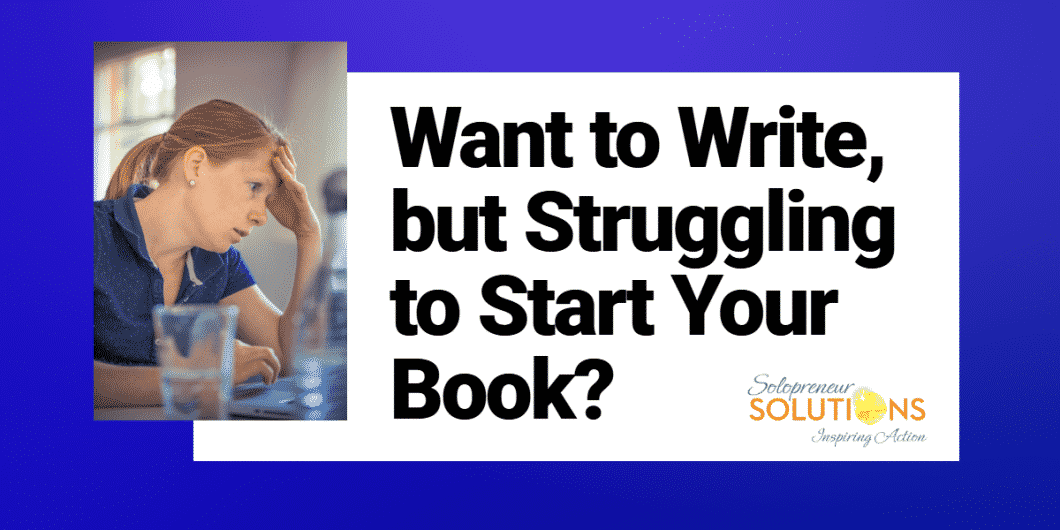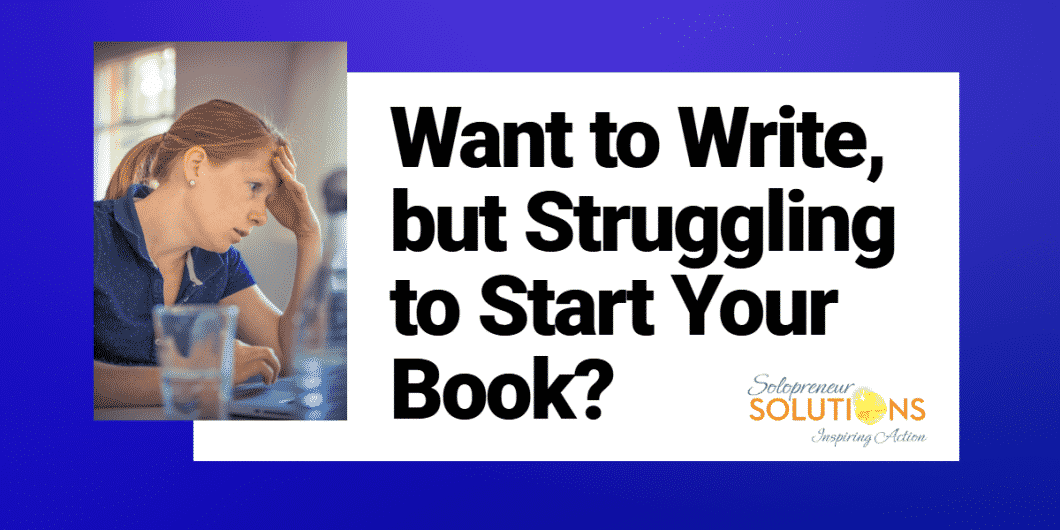Want to Write, but Struggling to Start Your Book?

 Part I
Part I
Do you want to write, but are struggling to start your book? Getting started is the single, biggest hurdle for many writers, especially first time writers. Taking that gigantic leap from saying you want to start my own book and actually doing it is just too daunting and easy to put off.
Critical Questions
It is helpful to first answer some questions about your struggle to start the writing process. It starts with the want-to. In other words, how big is this desire to write your book?
Did the desire to write emerge as a passing whim? Did you read an interesting book and decide you could write one like it?
Have you always wanted to write a book, or is this a sudden, recent notion? Is there a central issue in your life that is driving your writing ambition?
Secondly, what is the reason for the delay in starting? Is your personal schedule just too heavy? Is your living situation not conducive to this pursuit?
Do you get easily distracted every time you sit down to start? Do you suffer massive writer’s-block episodes every time you try to start?
Look back over the times you sat down to write, but for whatever reason, did not. Answering and analyzing your answers to these questions will get you to the crux of the matter.
Namely, do you really want to write, and what is stopping you? The point is people make time for what they really want to do. Once you know the cause of the struggle to get started, you are in a better position to eliminate it.
Time and Place
After resolving your catharsis by answering the questions above, writing your book requires two essentials: the time to write and a place to work.
Create the Time
Everyone has the same 24-hour day. How you manage your 24 makes all the difference. If you are ever going to write that book, you must set aside some time to get to it.
Peruse your current schedule. Find blocks of time you can set aside for writing. Make sure this writing time is regular. If not daily, you should at least set aside three or four days out of the week for this task.
If you can only find time once a week, this should tell you something about your writing ambition, or more precisely, your lack of it. At the rate of once weekly, you will probably never get your book written.
Create the Place
You must have a quiet, relatively comfortable work space. I said work space not lounge space. Too much comfort usually means work becomes a passing thought.
You should have a work desk, and chair along with the writing implement of your choice. Some prefer a keyboard; others a pen and pad. If you really want a challenge, try it with a dull nail on a flat rock.
The point is to establish a regular time devoted to nothing but writing.
Part II
Writing Process
With all the above essentials in place, let’s look at the actual putting-pen-to-paper process. The actual writing process is as varied as those who write. There is no invariable method that all writers must follow. Generally speaking, most writers follow the process laid out below in one form or another.
Subject Selection
Judging from the title of the article, I am presuming you already have a subject in mind. That is one third of the battle in writing already won, and you have not even started. Follow these next steps carefully. They will become the building blocks for your book.
Steps to Develop Your Subject Matter
Ask yourself what you want to say about your subject. Analyze what you want to say about the subject. Is it worthy of sharing, or is it better kept private? You must be tactful and sensitive with what you choose to say and how you say it.
Jot Down Ideas About Your Subject
Write your subject in the middle of a piece of paper. It can be a single word, phrase, clause or even a couple of sentences. Did I hear someone mention the old spider method?
Next, write down what you want to say about your subject as ideas come to mind. For now, they can be random. The object is to get words on the page and in no particular order. You are selecting the contents of your book.
These ideas may become whole chapters, or they may turn out to be short sections within chapters. The main focus here is to write down everything you wish to include.
Organize Your Ideas
This is one of the biggies. This is how you create and decide the book’s direction and purpose. How you order your book’s message is as important as your message. The order of the message establishes the central focus.
Develop Your Ideas
This is the meat of the book. Idea development is the central part of your book. What you have to say about your subject is the purpose for the book. Your ideas become major points for your overarching premise and conclusion.
You, as author, must lead the reader through the book, beginning with your premise, the supporting facts or evidence of your premise, and to the logical conclusion. Now, the reader may or may not agree, but your mission in writing is to state your perspective.
Your perspective, if your book is arguing a point of view, is generally valued by how convincingly you have presented your case based on the best available information at the time.
Sample Book Layout
Take note of this simple example of how you may start your book.
- Subject: Crime Purpose for Writing Book on Crime: To increase awareness, enlist help of law-abiding citizens, reduce crime and the harm it causes
- Subject Development: (ideas-impact on criminals; how their families are affected; impact on society; lives lost; lives ruined; financial costs; ways to prevent crime)
- Organize Ideas: Arrange Subject Development ideas in the order you want to write about them
- Develop Your Ideas: Use organized ideas to create chapters of book; arrange in any order you prefer to make your argument
- Book Conclusion: Your conclusion can either be stated outright as your final summary or say on the subject, or you can leave the conclusion to the reader.
Hopefully, you now have some useful guidance in your quest to start my own book. These are solid, action-oriented pointers that you can follow to overcome your initial hurdle of getting started.
